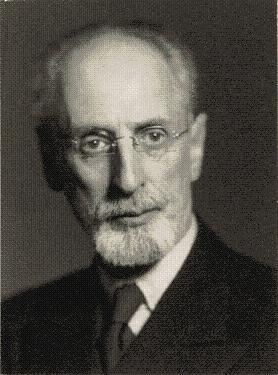Eli Heckscher facts for kids
Quick facts for kids
Eli Heckscher
|
|
|---|---|
 |
|
| Born | 24 November 1879 |
| Died | 23 December 1952 (aged 73) Stockholm
|
Eli Filip Heckscher was a very important Swedish thinker. He was born on November 24, 1879, and passed away on December 23, 1952. He studied how countries manage their money and resources, which is called political economy. He also studied the history of how economies have changed over time, known as economic history.
Contents
Eli Heckscher's Life Story
Eli Heckscher was born in Stockholm, Sweden. His father, Isidor Heckscher, was a businessman from Denmark. Eli finished high school in Stockholm in 1896.
He then went on to study at Uppsala University and Gothenburg University College. He earned his PhD degree from Uppsala in 1907.
From 1909 to 1919, Eli Heckscher was a professor at the Stockholm School of Economics. He taught about political economy and statistics. Later, he became a research professor focusing on economic history. He retired from teaching in 1945.
In 1929, Heckscher started a special place called the Institute for Economic and Business History Research. He wanted to make economic history a key subject in Sweden. He also wanted it to help guide government decisions. He worked with other smart people like Bertil Boëthius and Arthur Montgomery. Together, they formed what was known as the "Stockholm School." Their ideas helped shape government plans.
Eli Heckscher's son, Gunnar Heckscher, also became a famous political scientist. Gunnar led a major political party in Sweden from 1961 to 1965. Eli's grandson, Sten Heckscher, is also a well-known politician today.
By 1950, Eli Heckscher had written a huge number of books and articles, over 1,100! One of his most famous works was about Mercantilism, an old economic idea. This book was translated into many languages. He also wrote a very long history of Sweden's economy.
His Most Important Idea
Eli Heckscher's most important work was an article he wrote in 1919. It was called "The Effect of Foreign Trade on the Distribution of Income." In this article, he explained a new way to understand how countries trade with each other. This idea is now known as the Heckscher-Ohlin model.
At first, not many people noticed this important article. There were a few reasons for this:
- Heckscher published it in a Swedish journal, and not many people outside Sweden read Swedish.
- He wrote so many articles that it was easy to miss this one.
- Also, during that time, there were difficult situations in the world, especially for people of Jewish background. This sadly delayed his ideas from becoming widely known until after World War II.
One of Heckscher's former students, Bertil Ohlin, helped make his ideas famous. Ohlin expanded on Heckscher's theory and shared it with more people. Ohlin later won the Nobel Prize in Economics in 1977 for his work, long after Heckscher had passed away.
The Heckscher–Ohlin Theorem
The Heckscher–Ohlin Theorem is a key part of the Heckscher–Ohlin model. It helps us understand why countries trade certain goods.
The theorem says that countries trade based on how much "capital" (like money, machines, and factories) and "labor" (people working) they have.
Here's how it works:
- Countries with lots of capital usually have higher wages for workers. So, things that need a lot of workers, like clothes or simple electronics, cost more to make there.
- But things that need a lot of capital, like cars or chemicals, are cheaper to make in those countries.
So, countries with lots of capital will export (sell to other countries) products that use a lot of capital. They will import (buy from other countries) products that need a lot of workers. Countries with many workers will do the opposite.
What Needs to Be True for the Theorem?
For this theory to work perfectly, a few things need to be true:
- Countries must have different amounts of labor and capital. For example, one country might have more workers, and another might have more machines.
- The goods being made must either need more capital or more labor.
- Workers and capital (like machines) generally don't move between the two countries.
- There are no extra costs for moving goods between countries, like shipping fees.
- People in both trading countries want the same kinds of things.
The theory doesn't look at the total amount of capital or labor. Instead, it looks at how much capital or labor is available per worker. This means even small countries can trade with big countries. They can specialize in making products that use the resources they have more of compared to their trading partners.
The main idea is that if countries have different amounts of capital and labor, they can specialize. This specialization helps both countries' economies grow. The bigger the differences between the countries, the more they can gain from trading with each other.
See also
 In Spanish: Eli Heckscher para niños
In Spanish: Eli Heckscher para niños

